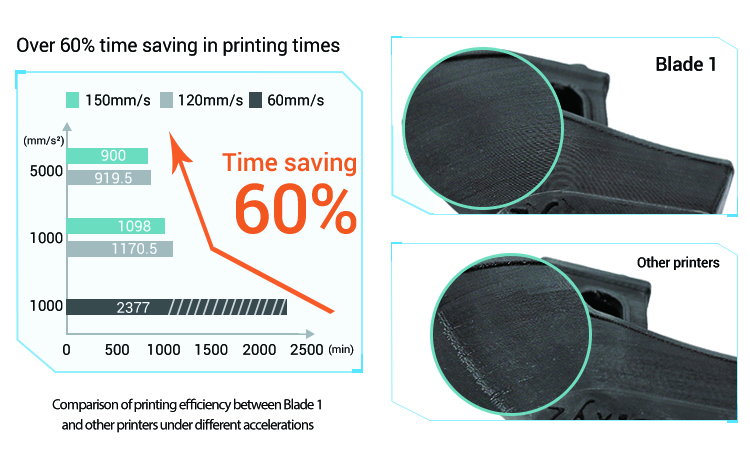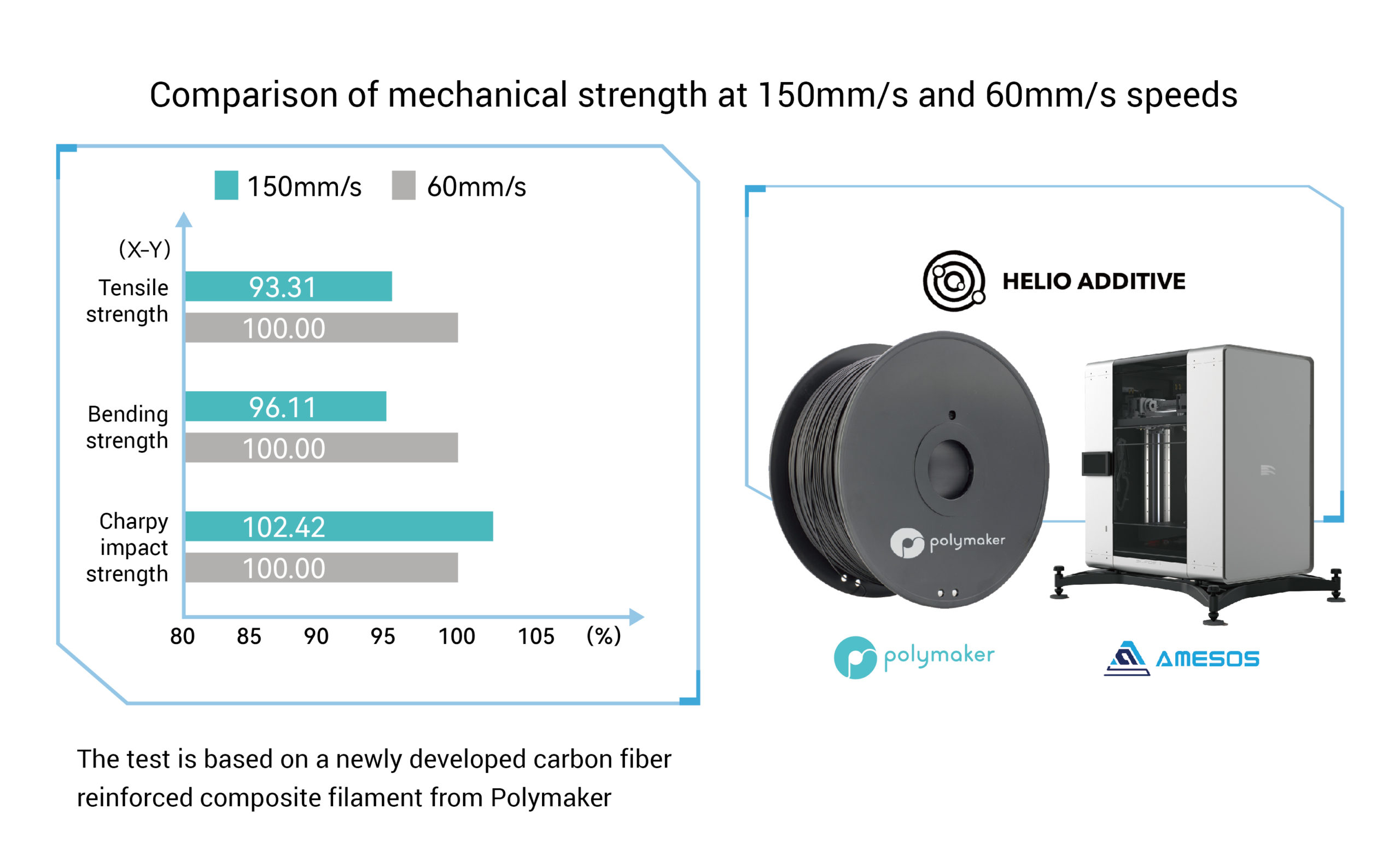Shanghai-based material developer Polymaker has partnered with Singapore’s AMESOS to develop a new extrusion 3D printer, which it is describing as the next generation of fused filament fabrication (FFF). The new machine is meant to be 60 percent faster than other desktop FFF systems, while also achieving improved quality even with the use of composite filaments.
Polymaker is already well-known in the industry as a maker of a wide variety of filaments for FFF. AMESOS is a recent spin-off of Akribis Systems. Founded in 2004, Akribis is a Singapore manufacter of direct drive motors and motion control technologies. It has been in the 3D printing space for the past five years. In 2019, Mitsubishi Electric announced a minority stake in the company, which made S$32 million (USD$24 million) in 2015. With Akribis’s backing, AMESOS is able to have offices in Singapore, China, USA, Germany, Israel, Japan, Korea, Malaysia and Thailand right out of the gate.

With a goal on improving the speed of FFF systems, the companies sought to overcome this major obstacle in the material extrusion space. The companies brought in Helios Additive, a Polymaker-backed startup, to apply its work in physics-based simulation to the problem of creating a new 3D printer that would fulfill the team’s vision of FFF 2.0.
“We started by trying to solve the problem alone,” says Tommy Huang, the Co-Founder of AMESOS, “but very soon we realized we are only part of the solution and desperately need many other areas of expertise.”
“The process complexity of FFF 3D printing is orders of magnitude higher than traditional polymer processing technologies. Therefore, to really tackle this problem we need some major paradigm shift in the R&D process,” said Dr. Xiaofan Luo, President of Polymaker. “We will take a process-centric and bottom-up approach,” Xiaofan explains. “We will start with studying and defining the process, which then guides the printer design and material development, not the other way around. And this is very different from how R&D is done today in many printer and material companies.”
The first 3D printer to come out of this collaboration is the Blade 1, which will be released in Q1 of 2022. The partners claim that the 3D printer is 60 percent faster than other FFF 3D printers. At the same time, they suggest that print quality is maintained, with Polymaker developing a custom composite filament for the system that has improved mechanical properties.

Trials of the Blade 1 demonstrate print quality at a speed of 150 mm/s and 60 mm/s. We’ve reached out to Polymaker to determine if 150 mm/s is the maximum rate at which the system prints. While traveling speeds for desktop FFF machines can be pushed past 200 mm/s when the printer is of decent quality, actual print speeds typically top out around 100 mm/s before extrusion becomes too slow for the process. Typically, 60 mm/s is the recommended print speed.
Therefore, if the Blade 1 can print well at 150 mm/s, it could reasonably beat most desktop machines and possibly many professional 3D printers. However, it still wouldn’t catch up to the blazing rate of Essentium’s line of systems, which print at a reported 500 mm/s. We don’t know the price of the Blade 1, yet, but it is surely less expensive than an industrial machine from Essentium, so it would surely be a good deal for the speed and quality.
This is meant to be the beginning of the relationship between AMESOS and Polymaker, which are hammering out a multi-year technical roadmap. Together, they aim to produce FFF 3D printers that are competitive and widely adopted.
AMESOS and Polymaker are currently working on a multi-year technical roadmap. Their ultimate goal is to make FFF based 3D printing a competitive, widely adopted production technology. Given the ability of Polymaker to step into the market and capture a significant market share, as well as the position of Akribis as a motor maker, I wouldn’t be surprised if this partnership pays off. We may see AMESOS become the household name that Polymaker has become in a short period of time.
Subscribe to Our Email Newsletter
Stay up-to-date on all the latest news from the 3D printing industry and receive information and offers from third party vendors.
You May Also Like
Gorilla Sports GE’s First 3D Printed Titanium Cast
How do you help a gorilla with a broken arm? Sounds like the start of a bad joke a zookeeper might tell, but it’s an actual dilemma recently faced by...
Nylon 3D Printed Parts Made More Functional with Coatings & Colors
Parts 3D printed from polyamide (PA, Nylon) 12 using powder bed fusion (PBF) are a mainstay in the additive manufacturing (AM) industry. While post-finishing processes have improved the porosity of...
$25M to Back Sintavia’s Largest Expansion of Metal 3D Printing Capacity Since 2019
Sintavia, the digital manufacturing company specializing in mission-critical parts for strategic sectors, announced a $25 million investment to increase its production capacity, the largest expansion to its operations since 2019....
Velo3D Initiates Public Offering in a Bid to Strengthen Financial Foundations and Drive Future Growth
Velo3D (NYSE: VLD) has been among a number of publicly traded 3D printing firms that have attempted to weather the current macroeconomic climate. After posting a challenging financial report for 2023,...































